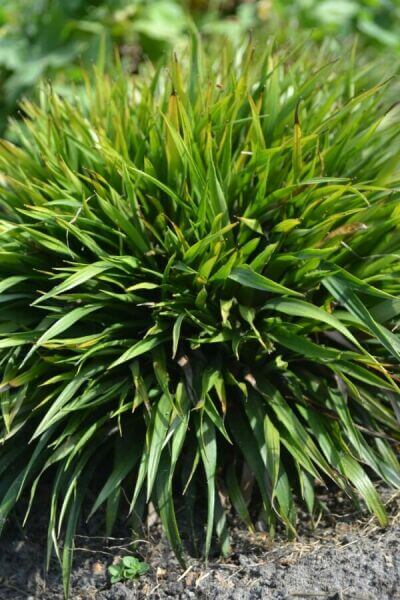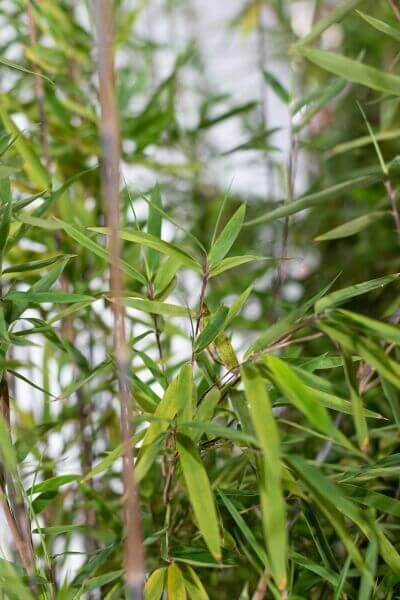Hedge Plants For All-year Screening
Hedge Plants For All-year Screening
Blog Article
Best Hedging Plants For Balcony Gardens
Enhance your garden's appeal with rich hedge ranges such as Yew (Taxus), Thuja, Laurel, Photinia, and Bamboo, celebrated for their structural stability and environmental benefits.
Yew and Thuja supply evergreen coverage and winter season resilience, while Laurel provides quick growth and broad, fragrant leaves.
Photinia includes seasonal charm with its dynamic red foliage, and Bamboo provides a low-maintenance, peaceful atmosphere.
These hedges improve air quality, minimize sound, and create tranquil, private spaces.
Correct planting, spacing, and maintenance ensure energetic development and ecological harmony.
Check out how these rich ranges can raise your garden's beauty and well-being.
Key Takeaways
Change Your Garden With Lush Hedge Ranges
- Select Yew for its thick, evergreen growth and unequaled longevity.
- Choose Laurel for its quick development and broad leaves, making sure fast privacy.
- Select Photinia for its lively seasonal foliage, which turns a striking dark red.
- Make use of Bamboo for a low-maintenance, winter-hardy hedge with aesthetic appeal.
- Space plants 2-3 per meter and prune routinely for ideal development and health.
Popular Hedge Plants
When changing a garden with rich hedge ranges, it's vital to think about popular hedge plants such as Yew, Thuja, Laurel, and Photinia due to their special attributes and benefits.
Yew (Taxus) is extremely respected for its durability and thick, green growth, making it a prime choice for withstanding landscapes.
Thuja is noted for its evergreen foliage and robust winter durability.
Photinia adds seasonal vibrancy with red leaves that darken in time, creating dynamic visual appeal.
Laurel offers rapid development and aromatic, broad leaves, perfect for fast personal privacy.
In Addition, Bamboo is an exceptional option for atmosphere, providing a low-maintenance, winter-hardy option that enhances the garden's visual with its classy, swaying walking sticks.
These selections cater to a range of horticultural requirements and preferences.
Benefits of Garden Hedges
Garden hedges offer a plethora of advantages, making them a valuable addition to any landscape. These natural barriers are cost-effective to carry out and offer significant wind protection, boosting air circulation and contributing to sound reduction. The thick foliage of hedges like Thuja and Beech guarantees privacy by blocking exposure, creating a tranquil and secluded environment.
Hedges also play a crucial function in microclimate regulation, supplying a stable environment that cultivates plant growth and decreases temperature variations. Their detailed leaf structures filter pollutants, enhancing air quality and contributing to a much healthier garden community.
Moreover, hedges master sound decrease, absorbing and deflecting acoustic waves to lower ambient noise levels. This double functionality of offering both visual and acoustic privacy boosts the general serenity and aesthetic appeal of any garden.
Planting and Upkeep Tips
For an effective hedge, precise preparation of the planting location is important. Ensure the soil has appropriate pH and drain to support strong root development.
Area the plants appropriately for the selected species. Water the hedge regularly during its preliminary development phase, adjusting as required with seasonal changes.
Execute a organized pest control and disease avoidance method, using organic or chemical treatments when necessary. Frequently examine for aphids, mites, and fungal infections.
Apply mulch to maintain moisture and suppress weeds. Seasonal pruning promotes thick development and air circulation, important for plant health.
Following these standards will assist you cultivate a lively, well-maintained hedge that enhances the charm of your garden.
Spacing and Cutting Standards
Spacing and Cutting Standards
Appropriate spacing and cutting are important for cultivating healthy, aesthetically appealing hedges. Appropriate spacing makes sure each plant gets enough nutrients, light, and air flow.
Follow these standards for optimum hedge upkeep:
- Spacing: Position hedge plants 2-3 plants per meter to motivate robust development.
- Pruning Methods: Regular pruning is important for preserving preferred hedge height and shape. Trim new growth in summer season and cut down older wood throughout winter.
- Seasonal Care: Adjust trimming methods and schedules according to seasonal requirements to make sure plant health.
- Hedge Height: Frequently screen and cut to keep the preferred hedge height and achieve consistent aesthetics.
Following these steps will ensure your hedge thrives, boosting both the appeal and performance of your garden.
Selecting the Right Hedge
Choosing the Right Hedge
Picking the proper hedge includes assessing factors such as fully grown height, foliage density, and ecological resilience. Effective hedge plant selection requires comprehending each species' development qualities and site-specific adaptability.
For instance, Yew (Taxus) offers exceptional longevity and thick growth, while Thuja is notable for its winter season resilience. Furthermore, considering upkeep requirements is important; fast-growing species like Laurel or Privet need regular cutting, whereas low-maintenance options like Bamboo or Ivy may be preferable for those looking for minimal maintenance.
Environmental elements such as soil type, light schedule, and moisture conditions need to also direct the choice process. This mindful approach guarantees the picked hedges will flourish, offering both aesthetic and functional advantages to the garden landscape.
Shipment and Planting Guidance
To guarantee your hedge plants grow, they should be provided by specialized carriers and planted promptly upon arrival.
Follow these important actions for effective planting:
- Soil Preparation: Enrich the soil with natural matter to enhance drain and nutrient content.
- Planting Depth: Create a trench two times the width and equal to the depth of the root ball.
- Watering Methods: Water completely after planting, keeping the soil regularly moist but not saturated.
- Mulching: Apply a layer of mulch to keep wetness and reduce weeds.
Consumer Support and Service
Given the vital role of timely support in horticultural pursuits, our client assistance group is offered 6 days a week through telephone, e-mail, and social media to offer skilled advice and quickly address any issues. Their dedication to fast action times makes sure customer satisfaction by dealing with queries connected to plant health, optimum planting techniques, and maintenance schedules.

Communication Method
----------------------
Within 2 days
Within 24 hours
This comprehensive support group, reinforced by an excellent 9.3/ 10 customer rating, highlights our dedication to boosting the gardening experience for every client.
Regularly Asked Concerns
How Long Does It Take for Hedge Plants to Establish?
Hedge plants usually require one to three years to become completely established, with the specific duration varying by types and growing conditions.
Efficient care throughout this critical period is vital for robust development. Constant watering, alert weed control, and proper fertilizer application are pivotal in promoting strong root advancement.
For instance, fast-growing types like Laurel might establish faster, while slower-growing varieties such as Yew might take longer. Thorough upkeep speeds up the facility process, resulting in dense and healthy hedges.
What Are the Best Hedge Plants for Personal Privacy?
The concern of the very best hedge plants for personal privacy includes examining evergreen and deciduous choices.
Evergreen hedges like Thuja, Laurel, and Cypress offer year-round coverage, making sure constant privacy.
In contrast, deciduous hedges such as Beech use seasonal personal privacy, shedding leaves in colder months.
Key maintenance suggestions for privacy hedges include routine trimming, fertilizing in spring, and proper spacing-- normally 2 to 3 plants per meter.
Furthermore, consistent watering and thorough weed removal are crucial for promoting healthy, thick growth.
Can Hedge Plants Bring In Wildlife to My Garden?
Yes, hedge plants can draw in wildlife to your garden by supplying vital benefits like shelter, food, and nesting websites, thus boosting local biodiversity. Yew, holly, and laurel are outstanding for attracting birds, while ivy supports a variety of pests.
However, it is very important to note that there are some disadvantages, such as increased upkeep to manage bugs and regular upkeep. Thoroughly selecting and preserving hedge ranges can help stabilize these advantages and drawbacks, ultimately promoting a lively and sustainable ecosystem in your garden.
Exist Any Blooming Hedge Plants Available?
Yes, there are flowering hedge plants available that can improve the charm of your garden.
For instance, Elaeagnus, also called Olive Willow, produces aromatic white flowers in the fall, including a touch of sophistication.
Photinia, another popular choice, showcases vibrant red leaves that develop into an abundant green, developing a vibrant visual effect throughout the seasons.
To ensure these plants prosper, it's important to practice correct pruning techniques and seasonal maintenance, such as trimming new development in the summertime and cutting down in the winter season.
These procedures will assist keep the health and aesthetic appeal of your flowering hedges.
How Do I Prevent Pests in My Hedge Plants?
To prevent pests in hedge plants, utilize natural bug control approaches and keep correct hedge care. Present beneficial insects like ladybugs, which prey on harmful pests, to create a well balanced environment.
Frequently inspect your hedges for indications Additional reading of problem and quickly remove any affected parts to avoid the spread. Make sure the health of your hedges by using well balanced fertilizers and offering sufficient water.
Utilize mulching to retain soil wetness and appropriate spacing to minimize plant stress and promote robust growth. These practices jointly assist in reducing pest issues and keeping a healthy hedge.
Conclusion
In essence, selecting the best hedge ranges such as Yew, Thuja, and Laurel can change any garden into a relaxing haven. These plants supply year-round plant, improve aesthetic appeal, and deal practical benefits like sound reduction and wind protection.
Proper planting techniques, precise spacing, consistent watering, and seasonal cutting are crucial for optimal development.
Trusted shipment services and expert consumer support make sure a seamless experience from purchase to planting, making it easier than ever to raise your outside area.
Garden hedges offer a wide variety of benefits, making them an important addition to any landscape. These natural barriers are affordable to carry out and provide substantial wind protection, improving air circulation and contributing to noise decrease. The dense foliage of hedges like Thuja and Beech makes sure privacy by obstructing presence, creating a secluded and tranquil environment.

Pruning Strategies: Routine pruning is important for maintaining wanted hedge height and shape. Cut new development in summertime and cut back older wood during winter season.
Report this page